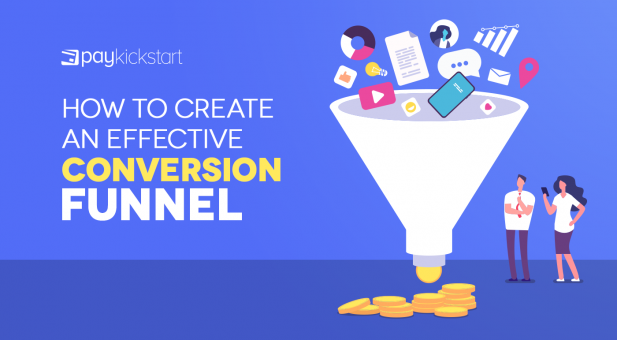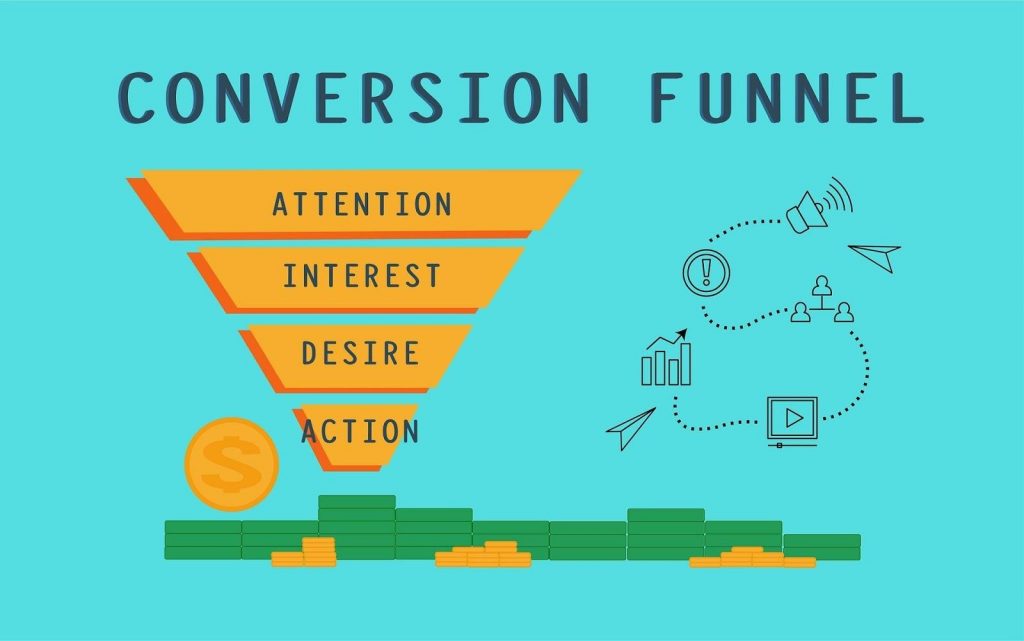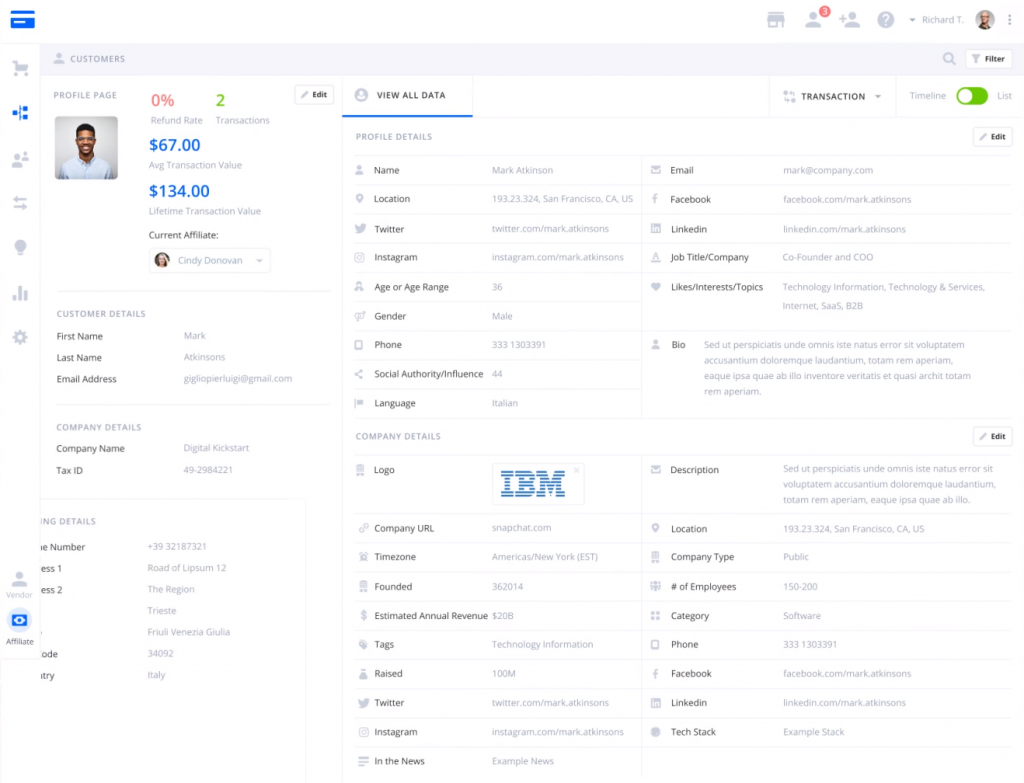Subscription growth hack (by PayKickstart)
Facebook Group - 3,932 members
Visit Group
Many site owners leave no stone unturned when it comes to trying to attract traffic. They generate top-notch content, design a great website, and create comprehensive social media and web content calendars. However, they still fail to attract traffic or convert their traffic into sales and subscriptions.
This guide will discuss how to create a conversion funnel, one of the most effective ways to turn leads into customers. Let’s cover everything you ought to know as you prepare for your marketing campaign.
A conversion funnel is composed of a series of steps that a potential customer goes through before they ultimately choose to buy something from your site or app. Most marketers break a funnel down into four or five stages.

Source: John Conde on Pixabay
The funnel starts by making the user aware of your brand or associating your brand with a problem they’d like to solve. Next, they consider your product as a solution to their problem. Most conversion funnels end with the customer making a purchase.
At the end of the funnel, you have customer retention. The goal of customer retention is to turn happy customers into brand advocates.
The amount of time it takes to generate a conversion will depend on your business model and the funnel. In general, the more expensive the product or service, the longer the customer acquisition cycle.
For example, a simple marketing funnel, where you sell a cheap product through a Facebook ad, might generate a conversion in a matter of minutes. A person sees an ad, they click on the ad, land on the sales page, and make a purchase.
The customer acquisition cycle for our B2B web design agency in the US is substantially longer. It can take weeks or even months of developing a relationship with a client before we generate a conversion. The longer acquisition cycle is a reflection of the price point of our services and the types of companies we are targeting.
Each step of the funnel requires different types of content. At the top of the funnel, you need to create content that will attract your ideal customer. At the bottom of the funnel, you need content that will convince them to make a purchase.
In the following section, I’ll share a process you can follow to create a conversion funnel for your business. I’m sharing a framework you can use to validate your idea and create an effective funnel for your business.
The best way to improve your chance of running a successful marketing campaign is to understand your audience. Most companies do this by creating a customer or buyer persona.
A buyer persona usually has information about your audience’s goals, pain points, interests, possible objections to your product, and demographic information. The example below provides a nice illustration of a buyer persona.

For a Business to Business (B2B) firm, the buyer persona should include information about the type of company you are targeting. You should also identify who makes the purchasing decisions and the criteria they use. For instance, if the decision-maker focuses heavily on cost, your marketing collateral should show how you can provide a cheap service.
The buyer persona will inform every part of your marketing funnel strategy. You should consider your customer persona when designing your funnel, selecting the marketing funnel, creating your marketing material, etc.
Once you’ve defined your customer persona, you need to design your marketing funnel. The type of funnel you create will depend on your business and the product or service you are selling.
Here are three rules to follow when creating your conversion funnel:
The type of conversion funnel that will work best for you will depend on your business. It will also depend on where most of your customers are in the process.
For example, PayKickstart funnels are very effective in generating upsells or downsells from customers who have already made an initial purchase, especially if you are launching a new product and would like to introduce that product as an add-on. PayKickstart gives you the ability to connect funnels to specific products and campaigns, which allows you to create unique funnels for different audiences depending on the source of traffic.
It’s very easy to design a marketing funnel using PayKickstart. The visual UI lets you see the relationships between different stages of the funnel and allows you to add as many layers or products as you wish. You can also specify purchase and decline URLs for each stage, culminating in a default Thank You page.
Once you’ve designed your conversion funnel, you need to build out the content.
The type of content you need to produce will depend on your business. Your capacity to produce the content will depend on your team’s size. I recommend using an online management tool to manage all of the tasks that need to be done.
For example, you can use Trello for day-to-day and long term project management. Using either tool, you can create content briefs, assign them to someone who has the relevant expertise, and have them reviewed by a QA specialist before getting them signed off, all by dragging and dropping project cards to specific columns. Because it’s cloud-based, your content team can work on projects anywhere.
If you don’t have the expertise to create your marketing funnel in-house, you can always outsource some tasks. Many talented freelancers and consultants are willing to do project-based work.
Your end goal is to get to the stage where you have something to test. The first version of your funnel does not need to be perfect. Initially, you want a proof of concept piece to prove that your funnel works.
The final thing you need to do before launching your funnel is to set in place a system for tracking and measuring your campaign results. You need to have some Key Performance Indicators (KPI). It’s a good idea to set SMART goals.
SMART stands for Specific, Measurable, Attainable, Relevant, and Time-Based.
Source: Eric Delcroix on Flickr
The type of funnel you create and the marketing channels you utilize will define how you track your campaign. If you’re tracking engagement on a website, you might use Google Analytics, for example. On the other hand, if you’ve created a conversion funnel that uses multiple marketing channels, you might use a Customer Relationship Management (CRM) platform for tracking the results of your campaign.
There’s always a sense of anticipation you get when creating a marketing funnel. You invest a lot of time and effort into developing your funnel, but you’re never going to be sure of the result until you test the results.
With the right monitoring systems in place, you can accurately track the success of your campaign to make sure everything goes great. Potential customers will enter your funnel, engage with your content, and decide to purchase your product or service. Sometimes that happens, and it’s great when it does.
More often than not, you’ll discover that you didn’t get the results you were hoping for from your conversion funnel. It’s unfortunate, but it does happen.
If your funnel is underperforming, the first thing you need to do is identify the problem.
There are many tools available that can help you identify potential issues. For example, you can use heatmaps on a website to see where people are clicking on a page or where they stop scrolling. If you have goal setting in place, tools like Google Analytics can reveal the drop-off through a funnel.
Once you’ve identified where a problem is occurring, you need to hypothesize the likely solution. There are a range of tools you can use to test your solution. For example, split testing or multi-testing tools allow you to test multiple versions of a page against each other.
Keep in mind, even when you’ve designed a funnel that converts, you need to monitor the results. Conversion rates will drop over time as information becomes outdated or consumer habits change. You need to adapt your strategy to keep in step with these changes.
A sales funnel will help you visualize and track your customers’ journey as they interact with their brand, from the moment they first hear about your business to the moment they convince their contacts to give you a try. Each step in the funnel corresponds to a specific level of awareness or desire, and your funnel content should be created accordingly.
Before you build a funnel, it pays to know your audience. Creating a buyer persona will help you understand your audience’s pain points and preferences. The insights you gather will help you create your marketing funnel.
The funnel should form the core of your marketing efforts. Your content should be engaging, timely, and useful because you’re guiding your audience on a journey beyond conversion and on to brand advocacy.
Ian Loew is a web entrepreneur and inbound marketing expert, and the Owner & Head of Business Development of Lform Design. After four years of helping Fortune 500 companies with MGT Design, Ian embarked on his freelance career before establishing Lform Design in 2005. He leads a team of creative professionals to deliver inspired online experiences via modern, responsive websites that reflect his clients' core values. When not at the helm, Ian can be found mountain biking with friends or spending time with his family.
Read More About Ian Loew